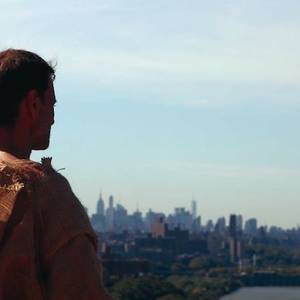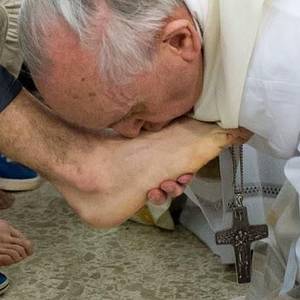The Church of the Sacred Heart of Suffrage in Rome offers a unique experience with its museum, the Museum of the Souls in Purgatory. This museum displays the images of souls trying to reach out to the living.
You chose: catholic church
-
-
Inter-ethnic peace-making is the ongoing challenge of today’s global societies—in the U.S., in Italy, and elsewhere. We asked Paul Moses, author of the forthcoming An Unlikely Union: The Love-Hate Story of New York’s Irish and Italians, to explain what he learned by writing this book.
-
A unique exhibition for the first time in the U.S. Every year roughly six million tourists, forty per cent of whom are Americans, come to the medieval city of Assisi in the heart of Umbria.
-
On April 27th, two great Popes will be declared Saint: John XXIII and John Paul II. Between them the Second Vatican Council and a great absentee on the day of the canonization, Pope Paul VI, who for both of them could have been a point of contact.
-
Even a pope with his charisma cannot change it by himself. Pontiff Bergoglio has chartered the course of hope, instilling a feeling in many people—believers and non-believers—that they can expect the Church to be less bent on power and more open to engaging with a different world.
-
“We are Responsible for the death of the ‘undocumented’” For his first trip outside of Rome, Pope Francis chose the Sicilian island, which symbolized last hope for many immigrants.
-
In an interview with Professor Stanislao Pugliese we review an illustrious precedent to Pope Ratzinger’s resignantion—that of Celestine V, who resigned in 1294. Scorned as a “coward” by Dante Alighieri who actually accused him to have paved the way to the appointment of the infamously corrupt Boniface VIII, Celestine was rehabilitated by the renowned Italian writer Ignazio Silone in a famous novel published in 1968. To offer our readers some food for thought and help put today’s events in the Vatican in a broader perspective, Silone’s biographer prof. Pugliese tells us the story of Celestine V as reinterpreted by a great Italian writer whose motto was “Conscience is above obedience.”
-
The shocking news of Pope Benedict XVI's resignation are followed by speculations over his possible successor. What's behind the decision that has stunned the world this morning?
-
A fictional work, by playwright Frank J. Avella, based on factual accounts and events, takes on the Catholic sex abuse scandal by chronicling the journey of one sex abuse survivor from chaos to clarity and back again.
-
Facts & StoriesThe Cardinal of Naples will be in New York this coming January, where he will meet the Italian community, personalities of the cutural and artistic world, academics, scholars, men of faith and laymen alike. His journey is entitled “Dire Napoli” with a slogan: “Don’t shut the door to hope.” Among the most significant moments of Crescenzio Sepe’s stay in New York will be the meeting with Rabbi Schneier and the leaders of the Jewish community, a round table organized by the John D. Calandra Italian American Institute on the problems of human migrations, and a conversation at Casa Italiana Zerilli-Marimò on the representation of Naples in cinema and the media. The visit will be accompanied by a beautiful exhibition of Neapolitan crèche art, which will be inaugurated at the Italian Cultural Institute on Tuesday, December 14 (6:30pm). i-Italy—which will be the official press service for this journey—met Archibishop Sepe in Naples for an exclusive interview about what “telling Naples” to the world means.







































